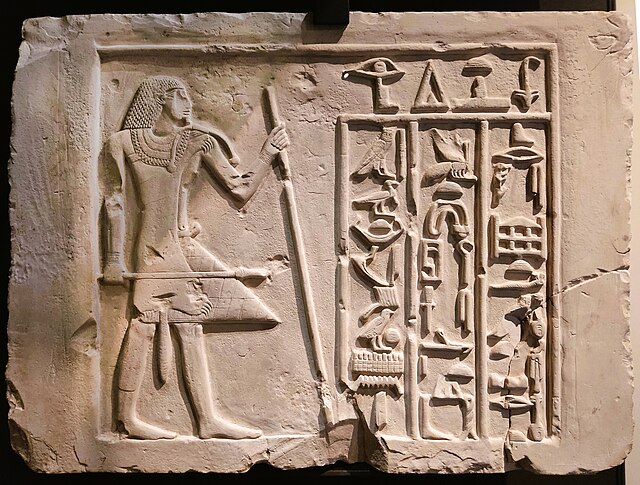Meni, Meny or Menankhpepy was an ancient Egyptian high official who lived during the reigns of Pepy I and Merenre Nemtyemsaf I, in the late Sixth Dynasty. Most of what is known about his life comes from his mastaba burial tomb in the Dendera Necropolis, a few hundred metres south of the Temple to Hathor. This tomb was explored during 1897 and 1898 by a team led by the British archaeologist Flinders Petrie.
One of the five stelae depicting Meni. This one is kept in the Bristol City Museum and Art Gallery.
Door drum bearing the inscription "the high official Meni".
Remains of the pyramid of Merenre in Saqqara, where Meni managed the funerary estate.
Meni as a fit young man, wearing a short kilt and a wig, clad on a leopard skin.
Merenre Nemtyemsaf was an Ancient Egyptian pharaoh, fourth king of the Sixth Dynasty. He ruled Egypt for six to 11 years in the early 23rd century BC, toward the end of the Old Kingdom period. He was the son of his predecessor Pepi I Meryre and queen Ankhesenpepi I and was in turn succeeded by Pepi II Neferkare who might have been his son or less probably his brother. Pepi I may have shared power with Merenre in a co-regency at the very end of the former's reign.
A small box of hippopotamus ivory inscribed with the royal titulary of Merenre Nemtyemsaf, Musée du Louvre
Merenre's cartouche on the Abydos King List
The smaller copper statue from Hierakonpolis, representing Merenre or a young Pepi I
The smaller copper statue from Hierakonpolis, representing Merenre or a young Pepi I








